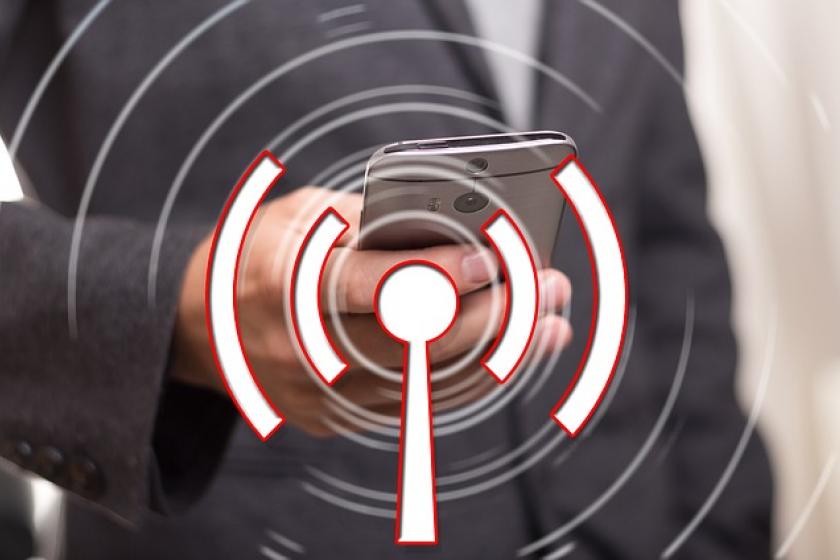5G, Wi-Fi 6, and The Replacement Complex
5G and Wi-Fi 6 will both play a role in creating powerful end-user experiences for years to come.
December 3, 2019

The tech industry has what I like to call a “replacement complex.” Eager entrepreneurs and aggressive vendors have a tendency to claim their new technology will replace whatever iteration came before. Video conferencing was supposed to replace corporate travel. Cloud was supposed to replace cumbersome data centers. Carriers and service providers are now starting to say the same thing about 5G, saying it will simply “replace” Wi-Fi.
5G is an important technology. Beyond faster speeds, 5G offers low latency, increased capacity, and higher data rates. Once realized, 5G will be a massive improvement from 4G and will signify a new chapter of next-gen connectivity.
But not only is the full promise of 5G years away from being fully realized, even when it is, it won't replace Wi-Fi. Just like I bet you continue to travel for work, and your business continues to depend on mission-critical applications that live in the data center. Wi-Fi is too omnipresent; it underpins critical communications for consumers and businesses all over the world. Despite the dramatic zero-sum games often played out by pundits and vendors, the reality is that 5G and Wi-Fi's latest standard — Wi-Fi 6 — will both play a role in creating powerful end-user experiences for years to come.
Different job, different tool
For example, there are certain use cases where Wi-Fi is superior and will remain the dominant technology, especially for bandwidth-intensive activities like an esports tournament or a lesson plan that involves robotics technology. Both situations require significant bandwidth, highly reliable infrastructure, and low latency. Because Wi-Fi uses high frequencies, it’s a faster and more reliable option for tasks such as streaming video or uploading data and big files. That’s why administrators at schools like SUNY Canton and McMinn County Schools choose Wi-Fi to power these programs.
Beyond bandwidth, Wi-Fi offers greater analytics and security capabilities than 5G. For most businesses, Wi-Fi is often the customer’s first touchpoint with your brand. Whether you’re a grocery store or a hospital, one of the greatest advantages of providing connectivity through your own Wi-Fi is the ability to gain real-time network and application insights. For example, a retailer can analyze and use its Wi-Fi data to engage with shoppers related to their location in the store, enable contextual and personalized marketing, and analyze customer and staff behavior to optimize offerings and services. Additionally, Wi-Fi offers security benefits as standards such as WPA3, which is baked into Wi-Fi 6, bring enhanced capabilities to protect networks and safeguard data.
Yet, there are certain applications where 5G offers strong advantages over Wi-Fi. To start, 5G is convenient. Businesses can tap a service provider, outsource connectivity, and the job of managing a network is out of sight and out of mind. 5G will also play an important role powering forward-looking experiences, such as remote surgery, drones, and VR. Additionally, self-driving cars and smart cities will depend on the speed, throughput, and coverage density that 5G technology provides.
The complementary path forward
And finally, there are use cases where Wi-Fi 6 and 5G will work together. Public venues, such as stadiums or malls, are prime examples of where users will leverage a combination of these technologies and will expect zero disruption as they toggle between the two. Fans en route to a football game might use cellular in their car for GPS directions and then automatically connect to the stadium's Wi-Fi to pull up their e-tickets at the gate. Then during half-time, they would likely use Wi-Fi to stream video highlights while leveraging cellular for calling. Additionally, these technologies will complement one another when it comes to backhaul and offloading. Carriers will likely start to take advantage of new Wi-Fi 6 access points to handle offload in 5G networks, just as they rely on Wi-Fi to offload 4G and LTE services today. Carriers are facing a similar decision around backhaul. Though fiber is currently the dominant option, many now are considering wireless as a viable alternative.
In terms of when to adopt these technologies, 5G is being deployed in certain markets, but as the headlines attest, it has a long way to go. For enterprises, it’s best to wait a few years for the technology to mature and scale. But for Wi-Fi 6, it’s available and ready to use now. In fact, we’re already seeing major league sports teams like the Houston Dynamo and college campuses such as West Texas A&M deploy Wi-Fi 6 to build excellent, reliable, secure customer experiences.
Progress > Replacement
There’s too much focus in our industry on replacement. It likely stems from both vendor competitiveness and the insatiable appetite for “innovation” that underpins and informs our field. However, the goal post shouldn’t be replacement, but rather iteration and progress. “5G will replace Wi-Fi” or “Say goodbye to the data center” are attractive headlines, but they’re neither realistic nor true. Not to mention, a rip and replace mentality is extremely costly, and likely infeasible, for most organizations. We need to have more honest, productive, and nuanced conversations about how old, new, and upcoming technologies will work in tandem and how they can best be leveraged to meet customers’ increasingly high standards. The conversation around Wi-Fi 6 and 5G would be a good place to start.
Read more about:
5GAbout the Author
You May Also Like




